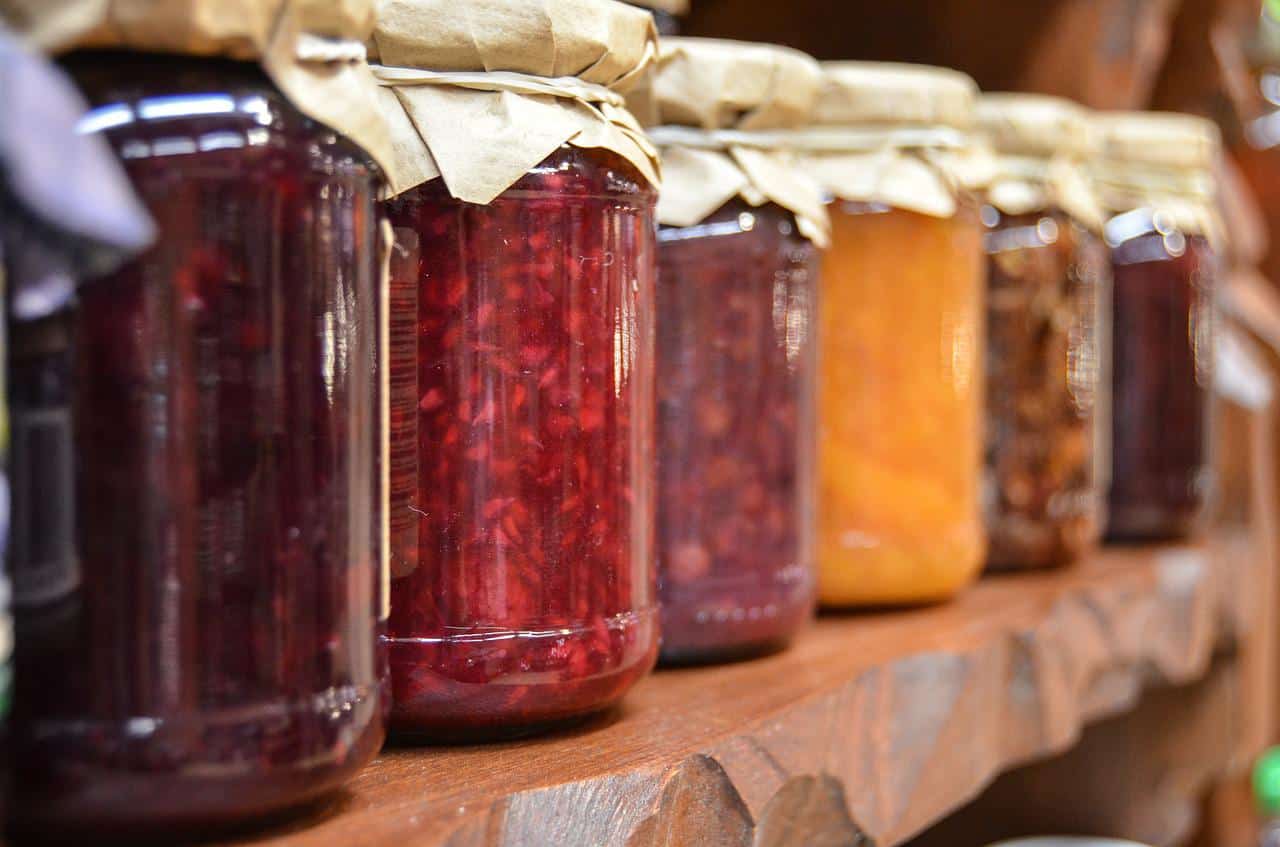Image by Silvia from Pixabay
Welcome back! This week, we continue discovering the importance of pectin-Jam n’ Such. The Power of Pectin gave us some interesting insights into this gelling powerhouse!
If you missed last week’s riveting pectin article, fear not! You can catch that article right here, https://www.mandyandmichele.com/the-power-of-pectin/.
Don’t forget you can sign up for a subscription to receive both a print and/or digital copy of The Edgerton Enterprise- each with separate pricing! The knowledge imparted at your fingertips! WOO!
We left off talking about acid and testing the acidity of your fruit juice. Pectin combined with sugar and acid becomes gel-like or known in the scientific world as semi-solid. Too much acid and your jelly will lose its liquid portion. Too little acid, and you won’t get it to gel. Bummer!
Where can I get pectin?
You can find pectin available naturally in your fruit or available commercially. Your commercial pectin contains other additives to ensure your pectin project gels. These additives are organic acids such as fumaric acid. Here are a few examples of commercial pectin liquid or powder:
- Certo Fruit Pectin Liquid®
- Pomona’s Universal Pectin®
- Sure Jell Original Premium Fruit Pectin®
- Ball 4.7oz Realfruit Classic Pectin®
If you can’t get your pectin project to gel using the above commercial products, you should look at the expiration date or re-read the directions. Operator error- AHEM!
Ah, sugar!

Sugar makes the world go ’round! It contributes to the flavor of your jelly, and is a part of the gelling jelly trio of acid, sugar, and pectin. Sugar also acts as a preservative in specific weight concentrations with the fruit. Who knew?
Acid, pectin, and sugar perform their individual functions, but together they create beautiful jelly!
Jam, jelly, fruit spreads, fruit butter, marmalades, preserves, conserves…
That list above gives us several options of what one can do with their fruit. But what is the difference? So glad you asked! Get ready for some information from Dr. Malcom Bourne, in his PDF “Science & Technology of Jams and Jellies”. I am sure he had a blast pulling all this information together.
- Jam – a product containing both soluble and insoluble fruit elements
- Conserve or preserve – large pieces of fruit can be seen
- Butter – a smooth, semi-solid fruit mixture, no fruit pieces or peel, possibly spiced
- Marmalade – made from citrus fruits, may contain some peel
- Jelly – made from filtered fruit juice, no pieces of fruit or insoluble solids
You don’t have to stop with fruit. I know folks who love to make Jalapeño jelly, Pumpkin butter, Mint jelly- the list goes on. I’m sure you could come up with your concoction. Should you run out of ideas, I found a website with jams and jellies. You can catch that list here, https://www.listchallenges.com/75-jams-and-jellies.
Making the Grade

Yes, jams and jellies get a ‘grade’ by the USDA. According to the USDA’s website, here is the grading for jelly:
Grades of Canned Fruit Jelly
- U.S. Grade A is the quality of jelly that has a good consistency; has a bright typical color; is free from defects; has a distinct and normal flavor, and scores not less than 90 points when scored in accordance with the scoring system outlined in this subpart.
- U.S. Grade B is the quality of jelly that has a reasonably good consistency; has a reasonably bright typical color; is free from defects; has a reasonably good and normal flavor, and scores not less than 80 points when scored in accordance with the scoring system outlined in this subpart.
- Substandard is the quality of jelly that fails to meet the requirements of U.S. Grade B.
Then, from a different USDA website, they have their USDA’s grading for jam:
Grades of Canned Fruit Preserves (Jams)
- U.S. Grade A or U.S. Grade A for Manufacturing is the quality of fruit and preserves (or jams) that have a good consistency; that have a good color; that is practically free from defects; that have a good flavor; and that score not less than 85 points when scored in accordance with the scoring system outlined in this subpart, provided: that no fruit preserve or jam shall be graded, inspected and/or certified as a manufacturing grade product unless it is suitably designated and/or labeled. Manufacturing grade products shall not be packaged in containers smaller than the equivalent of a number ten (No. 10) metal can (603 x 700).
- U.S. Grade B is the quality of fruit preserves (or jams) possess a reasonably good consistency; that possess a reasonably good color; that are reasonably free from defects; possess a fairly good flavor; and that score not less than 70 points when scored in accordance with the scoring system outlined in this subpart.
- Substandard is the quality of fruit preserves (or jams) that fail to meet the requirements of U.S. Grade B.
There you have it, friends! More information than you cared to know about pectin, acid, and sugar, along with the colorful world of jams, jellies, preserves, conserves, butters, marmalades, and spreads.
Till next time. Here is to good jams and jellies!
Resources:
- https://www.thespruceeats.com/what-is-pectin-1327810
- https://extension.umn.edu/preserving-and-preparing/making-jelly
- https://perrinesproduce.com/jams-and-jellies-different-types/
- https://iufost.org/iufostftp/JamJell_MCB.pdf
- https://www.ams.usda.gov/grades-standards/canned-fruit-jelly-grades-and-standards
- https://www.ams.usda.gov/grades-standards/canned-fruit-preserves-jams-grades-and-standards

Michele Bruxvoort is sure to draw you in with her delightful sense of humor and love for living life. She enjoys reading, repurposing, as well as remodeling the family home with her husband. Drawing from her life experience as wife, mom, and follower of Jesus, Michele brings you a very honest and real perspective on life. When you don’t find her writing, you can find her mowing lawns, stocking shelves, taking care of her grandbaby and tackling her latest life adventure.
Wisconsin native and empty-nester, she now makes her home with her husband of 27 years in the South West Prairie plains of Minnesota.



